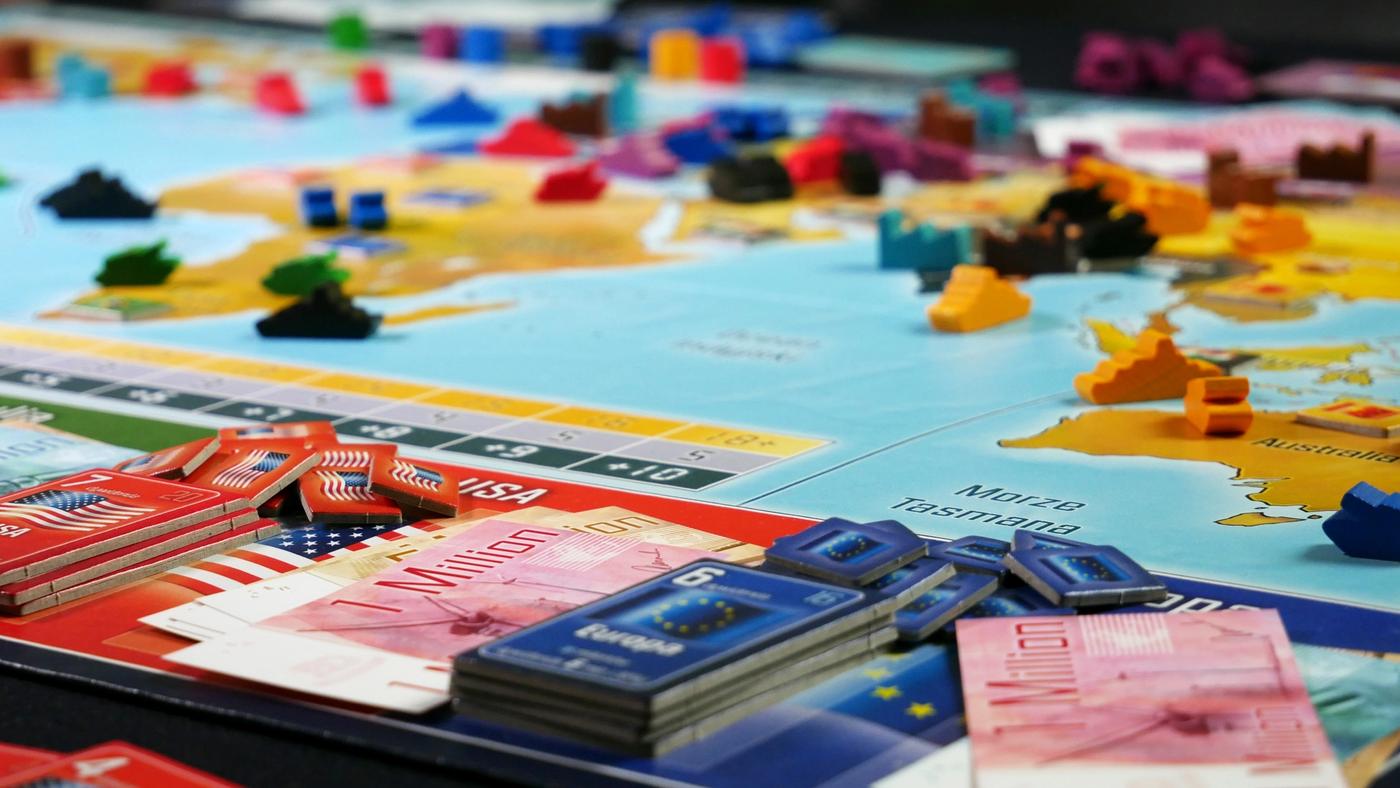Imperial 2030
Another week and another 4 hour game. This time it was Imperial 2030 by Mac Gerdts, who is also responsible for Concordia; a game in the top 30 on BGG. Imperial 2030 pits you as investors controlling six superpowers from behind the scenes.

Look & feel
The game was published in 2009 and it certainly has the look and feel of an older game. This isn’t necessarily a bad thing though. It has a nostalgic quality to it and reminds me of games I would have played when I was a kid. There’s no real subtlety to anything, but the one thing the production doesn’t do is get in the way of the game. The tank and ship meeples are great, and when there are plenty of them on the board you do get a sense of a nation really dominating the map. The factory meeples are good too. Nice and chunky, they just get the job done. The only aspect of the production that I didn’t experience was the paper money. We supplemented money from a different game to bypass the fiddlyness of dealing with paper money (something you do frequently in the game). How come there is paper money in the images in this post? Well I forgot to take any pictures, but I found these great shots by WWG under a Creative Commons license, so nabbed them for this article instead. I don’t speak any Polish, but it looks like a good board game site if you do.
Gameplay
I think all-in the game took close to 4 hours. This is definitely a bit too long for me, but in hindsight nobody was fighting to push any particular nation across the finish line, so we definitely dragged it on longer than it needed to. Two of us were playing for the first time, so that always adds a good 20% extra time on to the game.
A core mechanic behind the game is the rondel. Or in simple terms a circular selection of actions that the players must traverse in a clockwise direction. It’s an extremely neat mechanic and the actions that you can take are not too difficult to grasp after doing each one once. In order to ‘control’ a superpower (Russia, China, India, Brazil, USA, and the EU) a player must have purchased the most bonds in that particular power. They then get to choose what actions that superpower takes on any particular turn. There is an interesting arm wrestle that at the end of each superpower’s turn when players get the purchase new bonds. So if you had a small majority of bonds and had made huge gains with India, but were cash poor, it is quite likely another player will buy more bonds than you and take control of India away from you. It’s an enjoyable aspect of the game and allows you to change tack mid-game if you want to.
The superpowers are locked in an area control battle, but with the bonds system and the extremely simple combat mechanics (units of the same type in any zone simply destroy each other) you definitely feel detached from what they are doing in a really thematic way. They feel like pawns you are exploiting and have no real ties to. I made a tactical error with China mid-way through the game (they were probably the second most powerful superpower at the time) and just abandoned them completely and switched my allegiance to the USA.
Thoughts
All-in-all I really enjoyed Imperial 2030. It was definitely too long, but I do think this could be shortened on further plays now that my group understand the game more. I would like to play it again and perhaps even experience it with a fourth player. This might not help with play time, but it would allow for a bit more player interaction across the map and the different superpowers.